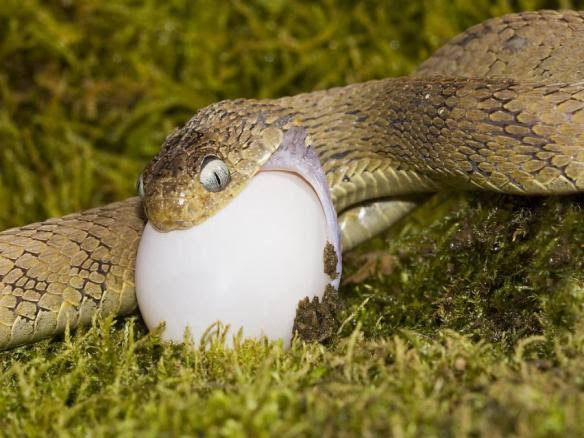
As a continuation of the previous article, here are four other weird feeding habits in the animal kingdom. If you haven’t gone through the first article, click here for an interesting read.
- Caecilians
Caecilians are limbless, snake-like, or worm-like amphibians. They are quite unpopular because of their shy nature and their obscure niche. More times than often, you find these creatures under the soil – whether it be on land or in water bodies. They exist in different parts of Africa, Asia, and the Americas. The largest caecilians can measure up to 1.5m in length.
Although they are known to feed on smaller creatures such as earthworms, this is why they are on the list: The young ones of some caecilians feed on the skin of their mothers. This feeding habit is seen in the egg-laying Taita Africa caecilian. Mothers develop a nutrient-rich skin that their young gnaw away at – exclusively – for sustenance. Every three days, another nutrient-rich layer grows in time to replace the depleted one. This phenomenon continues until the young ones mature.
By the way… Did you know caecilians are the only amphibians that exclusively reproduce through internal fertilization?
- Egyptian Vultures
Also known as Pharaoh’s vultures, Egyptian vultures are endangered birds that belong to the genus Neophron. They are also the only members. The Egyptian vulture’s range encompasses parts of Africa, Europe, and Asia. They are the most endangered of the European vulture species. Egyptian vultures often have white plumage. However, their flight feathers are mostly black. Like many other vultures, they are opportunistic feeders. They feed mainly on carrion, although they sometimes prey on smaller animals, and even eat eggs.
Why do they appear on this list? What is their weird feeding habit? It has to do with the eggs. Egyptian Vultures often use tools to crack open large eggs like ostrich eggs whenever they are lucky enough to get their hands – well, talons – on them. Egyptian vultures will use pebbles to smash these tough-shelled eggs until they crack. This is quite intriguing because tool use is a rarity among birds. In fact, only the smartest of birds consistently acknowledge and use tools – like corvids, for example.
- Vampire Finches
These small birds are native to the Galapagos islands. Vampire finches normally feed on seeds. However, when seeds and fruits are scarce, they resort to grisly methods to survive – and from their name, it’s pretty obvious what they resort to. These birds drink the blood of boobies – a type of seabird. The boobies, usually Nazca or blue-footed boobies, usually don’t seem to mind. After all, their relationship is a symbiotic one – albeit a twisted one, by human standards.
What is the basis of this weird symbiotic relationship in the first place? Apparently, finches help boobies get rid of parasites. They’ve been doing so over the ages, and in the process, they occasionally drew blood from the boobies. With time, this “part-time hustle” grew into a solid supplement option for these finches.
- Egg-eating Snakes
Egg-eating snakes are a phenomenon many in this part of Nigeria are acquainted with – whether by firsthand experience or not. Nonetheless, it doesn’t make the concept of their feeding any less bizarre. I mean, if you think about it, it is quite messed up.
First off, the eggs these snakes consume greatly exceed their head sizes. Yet, these snakes expand their throats and mouth wide enough to contain them – and swallow them whole. The ridiculous flexibility of their anatomy is as fascinating as it is scary. Then after swallowing, they writhe and twist their bodies, as if possessed, until the eggs break inside them. Once this happens, they extrude the shells from their mouths – and move on to the next meal.
Weird stuff.
If you enjoyed this, check here for other wildlife-themed pieces. Also, if you have any thoughts or comments you’d like to share, do not hesitate to drop them below.



Leave a Reply